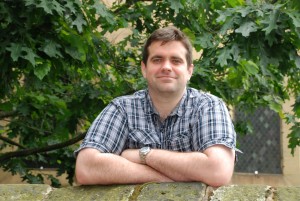Crime scene investigation benefits from advances in forensic science
Advances in the forensic analysis of body fluids found at crime scenes are helping to identify those guilty of a crime as well as preventing miscarriages of justice.
Identifying body fluids found at crime scenes
Dr Graham Williams, a forensic biologist at the University of Huddersfield, has developed new techniques in identifying exactly which body fluid is the source of a DNA sample.
Currently DNA techniques can state that a person’s DNA is present in a sample, but cannot always state which body fluid it is. Dr Williams’ research has developed a technique that shows exactly where an RNA (Ribonucleic Acid) sample comes from, such as blood, saliva or vaginal material. His technique incorporates Quantitative PCR (polymerase chain reaction) and analyses samples, such as fingernail scrapings, by characterising RNA, which is a single-stranded equivalent to DNA.
This research has the potential to have a major impact on the investigation and prosecution of sex offences resulting in a dramatic increase in the rate of successful prosecutions in rape cases. The process also reduces the potential for contamination of evidence and it is cost-effective.
The Forensic Biology Group at the University of Huddersfield, led by Dr Williams has also been working to answer questions relating to Temporal Forensics, such as how old is the person who deposited the stain and how long has the stain been there?

Dr Williams’ latest research has solved one of the few limitations of DNA profiling by successfully testing a technique for distinguishing between the DNA of identical twins.
The probability of a DNA match between two unrelated individuals is about one in a billion. For two full siblings, the probability drops to one in 10,000. Identical twins present exactly the same DNA profile as each other which has created legal conundrums when it has not been possible to tell which of the pair was guilty or innocent of a crime.
Dr Williams and his Forensic Genetics Research Group have developed a solution to the problem and published their findings in the journal Analytical Biochemistry.
As twins get older, the degree of difference between them grows as they are subjected to increasingly different environments. For example, one might take up smoking, or one might have a job outdoors and the other a desk job. This will cause changes in the methylation status of the DNA.
In order to carry out speedy, inexpensive analysis of this, Dr Williams and his team propose a technique named HRMA (high resolution melt curve analysis).
HRMA subjects the DNA to increasingly high temperatures until the hydrogen bonds break, known as the melting temperature. The more hydrogen bonds that are present in the DNA, the higher the temperature required to melt them. If one DNA sequence is more methylated than the other, then the melting temperatures of the two samples will differ – a difference that can be measured, and which will establish the difference between two identical twins.
Dr Williams provides a detailed summary of the science behind this research at blog site The Conversation.

Spotlight
Dr Graham Williams
Dr Graham Williams is a Consultant Forensic Biologist, and leads the suite of postgraduate forensic science courses in the School of Applied Sciences at the University of Huddersfield, which includes DNA, Toxicology, Anthropology and Entomology. He is also an Associate Director for the new Secure Societies Institute. Dr Williams’ main research is in forensic biology, focusing on maximising the information that can be obtained from a body fluid stain. He regularly consults on forensic biology matters with the police, government and private companies. He is also casework active, working on several cases a year, ranging from technical advice through to giving evidence in a court of law. To find out more about the research in this article, please contact Dr Graham Williams: g.a.williams@hud.ac.uk
Spring 2016 Issue
Return to the home page for the Spring 2016 Issue of Discover.
Next article
Mixing It: The Changing Faces of Wartime Britain. Britain’s stand against Hitler meant that the country saw the largest and most...